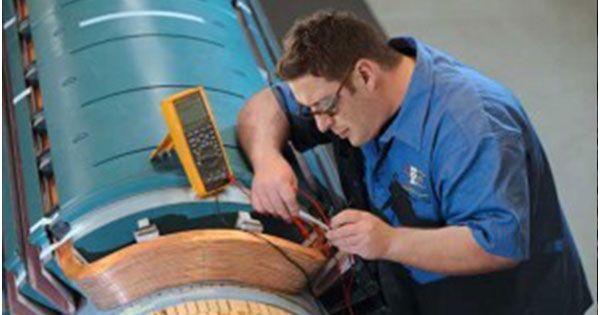Hydropower has been a high contributor to the global electricity rate and producer of mechanical energy for centuries. Over the years, the energy from this clean energy resource has seen tremendous technological maturity. At the moment, there are limited possibilities for the identification and implementation of new design concepts to update Hydropower operations.
Yet, many new trends are visible that influence this technology for mitigating flow instabilities and control techniques. The global renewable energy capacity reached an estimated total of 2.6 TW in 2019; 1.15 TW was from hydropower. Most of the hydroelectric dams are situated in China, which contributes 1.3 PWh hydropower generation. The trends affect the worldwide hydropower generation and consumption rates, on different parameters.
This article highlights six of the emerging trends in the hydropower industry; specifically, digitization, storage, and variable speed turbines, current-controlled rotors in generators, hydropower flexibility, fish-friendly, and novel technologies.
Digitization
Maximum hydropower plants use outdated designs. A major challenge for modern hydropower plants is enhancing their flexibility through advanced system services and storage capacity. Yet, the presence of hydrodynamic phenomena in these units reduces flexibility. For the power plant managers, it is necessary to gather real-time data on the operational quality of turbines for safe operations in the advanced grid-supporting services.
One emerging trend that would cause technological advancement in this context is the digitization of hydropower. This would have an impact on the development, design, maintenance, and operation of hydropower projects.
Novel concepts
There is a visible enhancement of the energy storage due to the hike in VRE (variable renewable energy) penetration in the EPS. PSPP is an advanced storage technology. Still, it is continuously evolving to meet the advanced requirements for mode transition, like turbine-to-pump and vice versa. Two PSPP technology trends are expected to revolutionize this area. These include underwater pumped hydro energy storage (UPHES) and Coordinated operation of hydropower and fast energy storage systems.
Moreover, small-scale hydropower centers on rural and mini-grid electrification strategies. This market is expected to have a CAGR of 2.4% by 2024. Some of the novel strategic trends that would work here include PATs operation strategies, design changes in gravity hydraulic machines like Archimedes screws, and hydrokinetic or low-head turbines. Deriaz turbines are expected to revolutionize both small-scale and big hydropower plants.
Variable speed turbines
The variable-speed turbines are already at their highest potential in terms of technology-readiness level. However, not many of them are in operation globally. The main reason for that is the time it takes for the concept to reach the commissioning stage. The cost of installing this hydropower generation is high and environmental concerns are also imminent during new development.
Yet, two challenges still need enhancement for the optimal variable speed hydropower generation. One task is enhancing the converter-fed machines and their insulation system. Also, it is important to magnify the hydraulic machines by enlarging their operating range. These trends are expected to emerge in this industry.
Fish-friendly technologies for hydropower
The low-head gravity turbines like hydrodynamic screws and water wheels fall under the fish-friendly technology category. Still, these work mainly at highly low-head sites. Therefore, the strategies that can impact and enhance hydropower should focus on fish-friendly turbines and fish-passage facilities, in particular.
Future trends include a careful analysis of the relationship between animal behavior inside the fishways and turbulent hydraulic conditions. Recent scientific strategies focus on these to improve the entry, attraction, passage, and approach in fishways for different species. Also, the R&D department concentrates on building fish-friendly turbines for high-head hydropower plants.
Two notable technologies include the Minimum Gap Runner turbine and the Alden turbine; the latter operates with up to 25 m head differences.
Hydro generators include current-controlled rotors
Advanced hydropower generators with current-controlled rotors are expected to change the operation and maintenance of electrical machines. Implementing segmented rotors with novel ideas can reduce the maintenance and cost of Power plant generator Repairs. Also, other trends can affect the control of electrical machines, like power electronic converters. The new ideas would improve the combined capacity of power electronics and electrical machines.
Flexibility in hydropower
Many factors like mitigation strategies for climate change need a high share of RES. As a result, the global RES variable generation requires new hydropower technologies that would increase flexibility over multiple hydraulic conditions.
In this context, the salient technologies that are currently developing include:
- J-Grooves
- stabilizer fins
- draft tube cones with an adjustable diaphragm
- air admission/injection
- cone wall tangential water injection
- axial water injection with low/high discharge and high/low velocity
- axial water injection including counter-flow tangential components
- battery hybrids
- hydroelectric energy storage solutions
- two-phase air-water injection along the axis
- excess flow-rate-centric ejector power plants
- smart modeling and control solutions
These would work to improve the operating range and flexibility of the hydropower units.
Conclusion
The role of hydropower in the future would not simply depend on technological advancements. The knowledge breakthrough available in other sectors and climatic projections would play a role in the rising trends. Overall, different enhanced technologies would increase the capacity and operation of hydropower plants.

Reblog It collaborates closely with clients to develop tailored guest posting strategies that align with their unique goals and target audiences. Their commitment to delivering high-quality, niche-specific content ensures that each guest post not only meets but exceeds the expectations of both clients and the hosting platforms. Connect with us on social media for the latest updates on guest posting trends, outreach strategies, and digital marketing tips. For any types of guest posting services, contact us on reblogit.webmail[at]gmail.com.
